Zambia has 17 million people, a stroke epidemic, and no neurologists
This story was supported by the Pulitzer Center on Crisis Reporting.
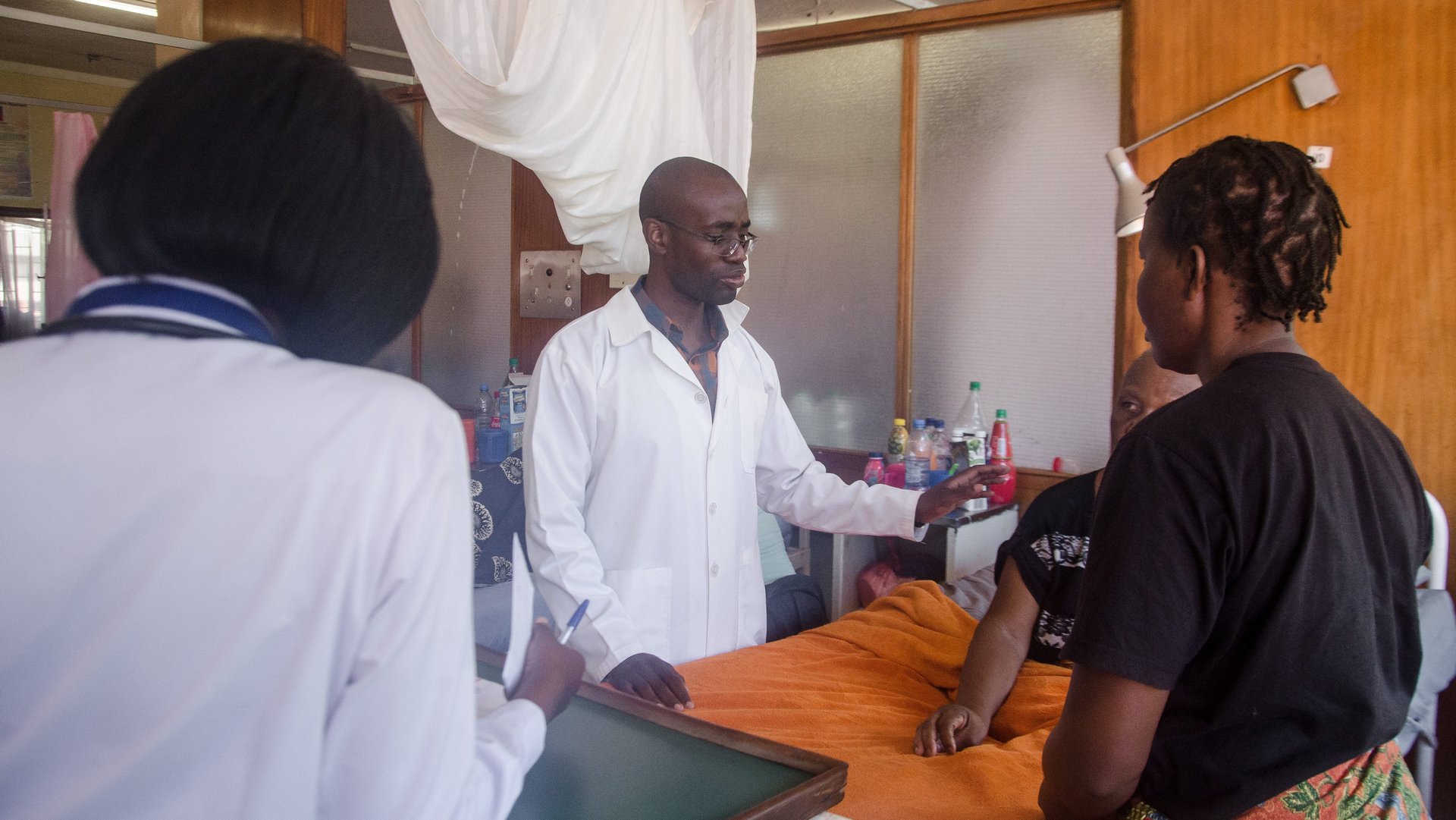

This story was supported by the Pulitzer Center on Crisis Reporting.
Stanley Zimba was tired.
The proximate cause was his just-completed rotation as an internal medicine physician at University Teaching Hospital, the biggest and busiest hospital in Zambia’s sprawling capital of Lusaka.
As the hospital of last resort in a poor nation of 17 million, UTH treats all comers. In a typical 24-hour shift in September, Zimba, 38, treated patients with pneumonia, tuberculosis, and diarrhea complicated by HIV. Patients with advanced prostate cancer and intestinal blockages also arrived, wrongly admitted to his internal medicine unit, but Zimba saw them anyway.
There were also four or five cases of stroke. Stroke is the other cause of Zimba’s exhaustion, an often overlooked disease that has become his life’s work.
In Zambia, stroke is a leading killer. Yet there are no native-born Zambian neurologists who can help stem the tide. For decades, the country has depended on foreign neurologists who may be unfamiliar with its languages and culture, who are not full-time residents, and whose primary aim may be research, not patient care.
The problem isn’t unique to Zambia. Across the developing world, neurological diseases including stroke, Parkinson’s, and epilepsy go undiagnosed and untreated. While high-income countries average seven neurologists per 100,000 residents, low income countries have 0.1. In many, the number is zero.
Zimba hopes to change that. He is one of five doctors enrolled in a neurology training program at UTH, the first of its kind in Zambia.
Launched last year, the program aims to create a permanent cadre of Zambian neurologists. They will speak the same language as their patients, share the same background and, so the theory goes, spread the best practices for the care of brain injury and disease across Zambia’s healthcare system.
The demanding program comes at considerable personal cost. A husband and father with three children under 10, Zimba has little time to see his family. He skips lunch and hasn’t taken a vacation in 10 years. And as a fully licensed physician who ran his own rural hospital, he has had to check his ego and submit himself to being a student again. Zimba’s general affect is one of resigned weariness, of a man who has so much to do there’s no real point in hurrying.
“I’ve been in school all my life,” he says. “I’ve never really taken a break.”
The payoff, he says, will come from bending the arc of stroke care in Zambia, where thousands die or live with disability unnecessarily.
“It’s a huge responsibility,” he says. “The burden of stroke is enormous.”
Few options for treatment
Stroke is the world’s second-leading killer, causing an estimated 5.8 million fatalities annually—trailing only its close cousin, heart disease.
In wealthy western countries, stroke occurrences and fatalities have been declining steadily, thanks to advances in prevention and treatment. Ambulances deliver patients to hospitals with dedicated stroke units, where CT or MRI machines can identify the type of stroke: The majority are ischemic, caused by a blocked blood vessel in the brain, and the rest are hemorrhagic, caused by a ruptured blood vessel. Accurate identification matters, because the most effective treatment for ischemic stroke now available—a clot-dissolving drug known as tPA—can be fatal in hemorrhagic patients.
But tPA, which can cost $8,000 per dose, isn’t available in Zambia, nor in most developing countries. Neither are even more sophisticated surgical interventions, like one where a catheter snakes up through an artery in the neck to pluck the clot out of the brain. The absence of those treatments is one reason fatal strokes are almost twice as common in low and middle income countries, with 105 deaths per 100,000 person-years, than in rich ones (61 per 100,000).
Perversely, as advances in global health have reduced deaths from infectious disease, populations are living longer and are more likely to suffer from heart disease and stroke. Those diseases are also a result of rising affluence, which has led to changes in lifestyle and diet. For millions, access to processed foods, sugar, and salt, as well as tobacco, have increased rates of obesity, diabetes, and high blood pressure—all contributors to stroke.
As stroke incidence increases, its cost isn’t just in lives lost, but in the rise of disability. Many survivors are unable to work and contribute to the economy; often, they require constant care that forces family to drop out of the workforce as well. There are estimated to be more than 80 million stroke survivors globally: Their cost to the global economy is measured in the hundreds of billions of dollars.
Despite the toll, stroke is often overlooked by the global health community. While the Global Fund—an international effort to combat AIDS, malaria, and tuberculosis—spends more than $4 billion annually, there is no equivalent for heart disease and stroke.
Even if Zambia’s hospitals could deliver emergency stroke treatment, it would be available only to a tiny percentage of patients. In wealthy countries, stroke care is driven by the mantra “time is brain.” Caregivers are trained to recognize symptoms, such as slurred speech and drooping facial features, and to call 911 or its equivalent. Patients are whisked by ambulance to the nearest stroke center, where they can be diagnosed and treated, quickly—tPA, for one, is effective for no more than 4.5 hours after a stroke.
None of that infrastructure exists in Zambia. There is no emergency dispatch system, and its few ambulances mostly shuttle patients from one hospital to another. Stroke patients are rarely seen within the first few hours of onset, and it’s much more common for them to arrive days or even weeks after the attack. In Zambia, stroke is treated as a chronic condition, and patient care is focused on preventing future occurrences.
One of Stanley Zimba’s goals, he says, is for Zambia to begin to treat stroke like an emergency.
A long journey to neurology
It may not have been inevitable that Zimba became a physician, but it would have been easy to predict. His father was a hospital administrator, his mother worked for the ministry of finance, and at one point his family lived on the grounds of UTH. By high school, he said, “it was almost decided I was going to be a doctor.”
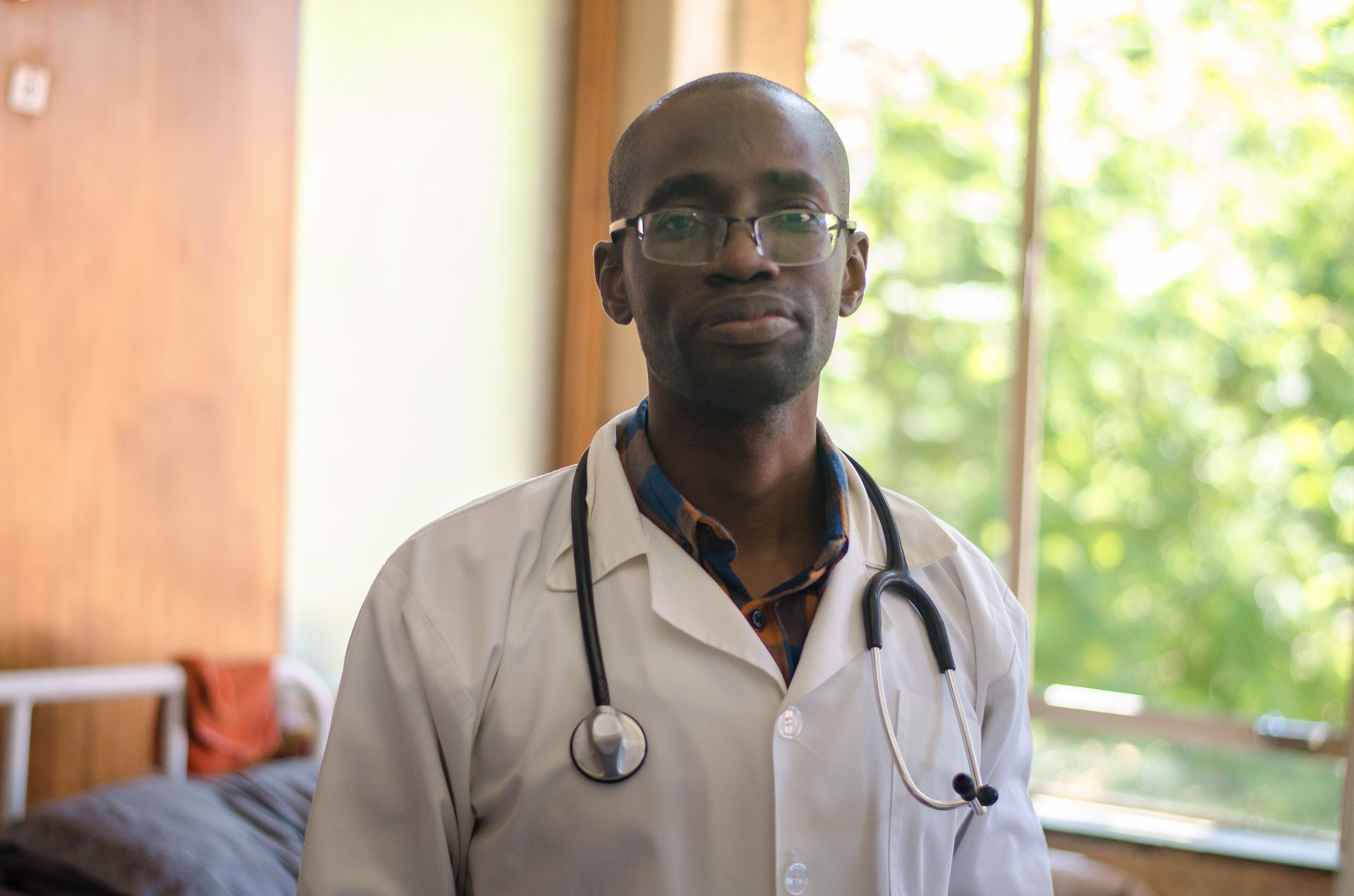
Zimba graduated from the University of Zambia’s seven-year medical degree program in 2009, then spent two years rotating through departments at UTH, with six months each in surgery, pediatrics, obstetrics, and internal medicine. Then, like all newly minted Zambian doctors, he spent two years in rural hospitals, often as the only doctor, seeing a dizzying array of patients and maladies.
For much of his rural posting, he was in a small town in the Southern province. He delivered babies, treated burns, set broken bones, stitched wounds, and single-handedly tried to hold back the flood of disease and injury.
“I was alone, managing a population of 500,000 to 600,000,” he said. “It was a nightmare.”
Patients and their families would come to his house at all hours, sometimes demanding to be fed because the clinic staff failed to provide meals.
While some physicians thrive in this kind of environment, Zimba was frustrated by the relentless pace and his inability to make more than temporary fixes. After two years and three months, he was eager to return to a life with more predictable hours at Lusaka’s UTH—and an opportunity to make a bigger difference in Zambian health care.
“When I came back, I felt I had no work,” he said. “For the first time I could sleep all night.”
Although already a physician, Zimba resumed training at UTH to become a specialist in internal medicine. First, he considered cardiology. But Zimba noticed the volume of stroke patients had increased in the decade between his first years in medical school and his return to UTH. Some of the increase was likely due to better access to hospitals, so more stroke patients were being diagnosed. But there also appeared to be a general increase in stroke.
Gretchen Birbeck, an American neurologist, began working in Zambia as a University of Chicago medical student in 1994 and has returned almost every year since. In that time, virtually none of the historic causes of stroke in Zambia have improved, she says. Zambians still have very high rates of heart disease, and they’re increasingly suffering from hypertension and type II diabetes. While Zambia’s infection rate for HIV, a known cause of stroke, has declined, it is still among the highest in the world at 11.3%. And in a cruel irony, antiretroviral therapies—first introduced in Zambia in 2004 and responsible for sharply reducing HIV deaths—can also lead to stroke.
The rise in stroke, and the dearth of specialized care, tipped Zimba toward neurology. “I think that was where the desire (to pursue neurology) came from,” he said. “To look after patients and then to sort of add to an area where there was no expertise.”
But without a formal neurology program at UTH, Zimba had to scramble to find training. In 2016, he spent three months in Beijing at Xuanwu Hospital, then in 2017, was granted funding from the Zambian health ministry to train in Cape Town for three years. “They have a super, super program,” he said. “I was very eager.”
He left his family, traveled to South Africa, and rented an apartment while waiting for the funding to come through. It never did. After eight months, he returned to Zambia, where for the first time a neurology training was available.
Birth of a training program
Around 2014, Omar Siddiqi, an American neurologist doing research at UTH, began discussing the possibility of neurology training in Zambia with Birbeck—his mentor, who had become a professor at the University of Rochester in New York.
Siddiqi first arrived in Lusaka in 2010 for a project that examined central nervous system infection in HIV patients. Now an assistant professor at Harvard, Siddiqi was eager to take his neurology training to the developing world. But he eventually moved his attention away from academic research.
“You have to be aligned with what’s needed,” he said. “The research was great for my career, but what can I do that’s the greatest bang for my buck?” Now, Siddiqi lives in Lusaka with his wife and young children 10 months a year; the rest are spent in Massachusetts and Rhode Island.
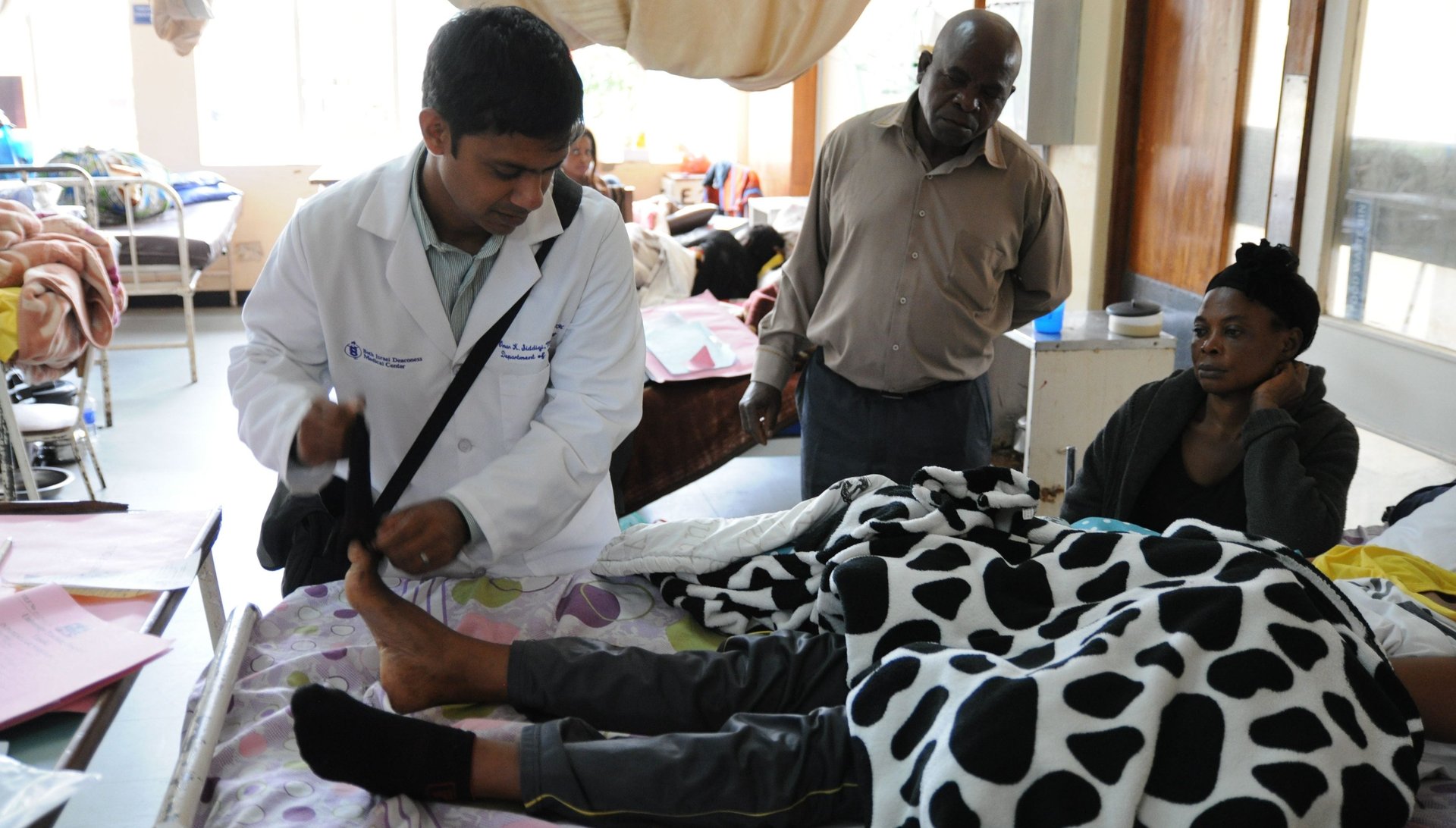
Siddiqi began sketching out a plan for a training program with Birbeck and Igor Koralnik, another American neurologist in Zambia. The idea had precedent: In 2006, Ethiopia initiated a program to train eight neurologists, one for each of the eight medical schools in the nation, which quickly doubled the nation’s neurologists. In Honduras, there was one neurologist for every 325,000 potential patients in 1998, when a training program was launched. By 2010 the neurologist-to-patient ratio had increased 50%.
The Zambia proposal gained momentum in 2014, after Siddiqi met Deanna Saylor, an American neurology resident at Johns Hopkins with experience in Kenya and Uganda. After the program was approved by the University of Zambia and the Ministry of Health, Saylor received a Fulbright scholarship from the US state department to fund her participation. In January 2018, she moved with her husband and two young children to Lusaka to lead the program.
The training program won’t bring Zambia’s ranks of neurologists in line with wealthy countries. The US has about 17,000 neurologists, or 5.1 for 100,000 potential patients; Zambia would need more than 900 neurologists to reach the same ratio. But it would train enough neurologists to guide the non-specialists who will continue to deliver most of Zambia’s neurology care.
“Prior to this program, medical doctors were learning neurology from non-neurologists,” Saylor says. “Hopefully, now every doctor will be trained by a neurologist.”
Zimba was among the first class of five enrolled that fall, selected not just because of their medical prowess, but because of their leadership potential.
“A lot of what happens in neurology in Zambia depends on the five of them,” Saylor says.
Once trained, the Zambian neurologists could leave the country in search of higher pay and better working conditions. But Lorraine Chishimba, another member of the first class says she has no intention of leaving—even though, with a sister studying for a PhD in Australia, emigrating may not seem like such a stretch.
“I love my country and I’d like to serve my people,” she says. “Once the program began, I knew this was going to be big,” Chishimba says. “We were going to be the first Zambian neurologists.”
Making the rounds
Completed in 1975, University Teaching Hospital is a bewildering complex of buildings linked by open-air walkways two and three stories in the air. Bright blue jacaranda trees brighten the courtyards, and everywhere cleaners with mops attack the grime of the city.
On a Monday morning in September, Saylor leads the neurology trainees on morning rounds through UTH’s patient wards. For visitors accustomed to the semi-private rooms in US hospitals, the wards are jarring. Patients are packed in, dozens at a time, in some cases in beds arranged head-to-toe.
There is none of the monitoring technology found in western hospitals, and few receive IV drips. There are no televisions.
One patient, a 72-year-old farmer from southern Zambia, had seizures and lost his ability to speak clearly. Chishimba conducts a physical examination, lifting his legs and arms, and examining his pupils with the flashlight of a mobile phone. She and Saylor confer with the patient’s grandson, McDonald, who is spending the day at his bedside.
Most direct patient care at UTH is provided not by nurses or orderlies, but family members. It’s they who feed and bathe the patients, and find them their mismatched sheets and blankets. Called bedsiders, they’re often the wives and mothers of patients, and they are the hospital’s workaround for a lack of resources. Bedsiders may travel great distances, and unable to afford hotels in Lusaka, they sleep in the hospital’s courtyard. In the mornings, they can be found slumbering, cooking, or socializing, while their laundry hangs to dry on shrubbery.

UTH doctors universally praise the bedsiders, who, like McDonald, are available to answer questions about the patient. His grandfather, who grows maize and sweet potatoes, first had stroke-like symptoms two weeks ago, and was sent from his regional hospital to UTH. The doctors are still waiting for a CT scan; the test was delayed because the family couldn’t afford the 900 kwacha ($66) fee, McDonald says, and had to wait several days for a subsidy to be granted by social workers.
Saylor asks McDonald if his grandfather is slurring his words, a condition called dysarthria, which would suggest a small stroke deep in the brain, or if he’s making up new words, a condition called aphasia and caused by a stroke in a large blood vessel. The difference could guide his course of treatment.
In a country where stroke is so prevalent, determining what isn’t stoke can be a huge challenge, Saylor says. One benefit of having Zambian neurologists will be their ability to diagnose other diseases of the brain and nervous system. “When I arrived, everyone admitted with weakness on one side of their body was admitted as a stroke,” she says. “But maybe it’s MS. Maybe it’s a brain tumor.”
Or maybe it’s something even less common. At a walk-in clinic for neurology patients held at UTH every Wednesday morning, the doctors see the full scope of neurological problems in Zambia. Until the clinic opened, Zambian doctors had never diagnosed patients with multiple sclerosis or neuromyelitis optica, Zimba says. Now, doctors across Zambia send patients with undiagnosed disorders to the clinic.
“When I was training as a physician, the teaching was that these are Western diseases,” Zimba says. “But then when we started the service, some of the diseases we thought were not there, I mean, we’ve been seeing them.”
The cost of stroke
Still, many of the weekly clinic’s attendees are stroke patients who return every few months for checkups and to have prescriptions renewed. The lucky ones are examined in private; others are crowded into one room, as three neurologists conduct interviews separated by curtains. Outside the open windows, a whining generator adds to the din.
Zacheus Chikasa, 44, waited with his wife and grandson. After suffering a stroke in July of 2015, he was left unable to walk without a cane. A middle class swimming pool salesman with three children, Chikasa was forced to retire and his two younger children had to drop out of school. Chikasa blamed himself when his oldest daughter became pregnant by a man who later left her. Had he been better able to provide for her, he says, she would have stayed home.
“It’s a difficult life,” he says. “Everything has changed for us.”
When Chikasa first suffered his stroke, he had an intense headache and blurred vision, but was able to walk. It was only after he was treated in the hospital that his stroke grew worse, he says.
Though it’s impossible to know now, Chikasa may have been the victim of a common conundrum in emergency stroke care in poor countries, when it can be impossible to determine the type of stroke.
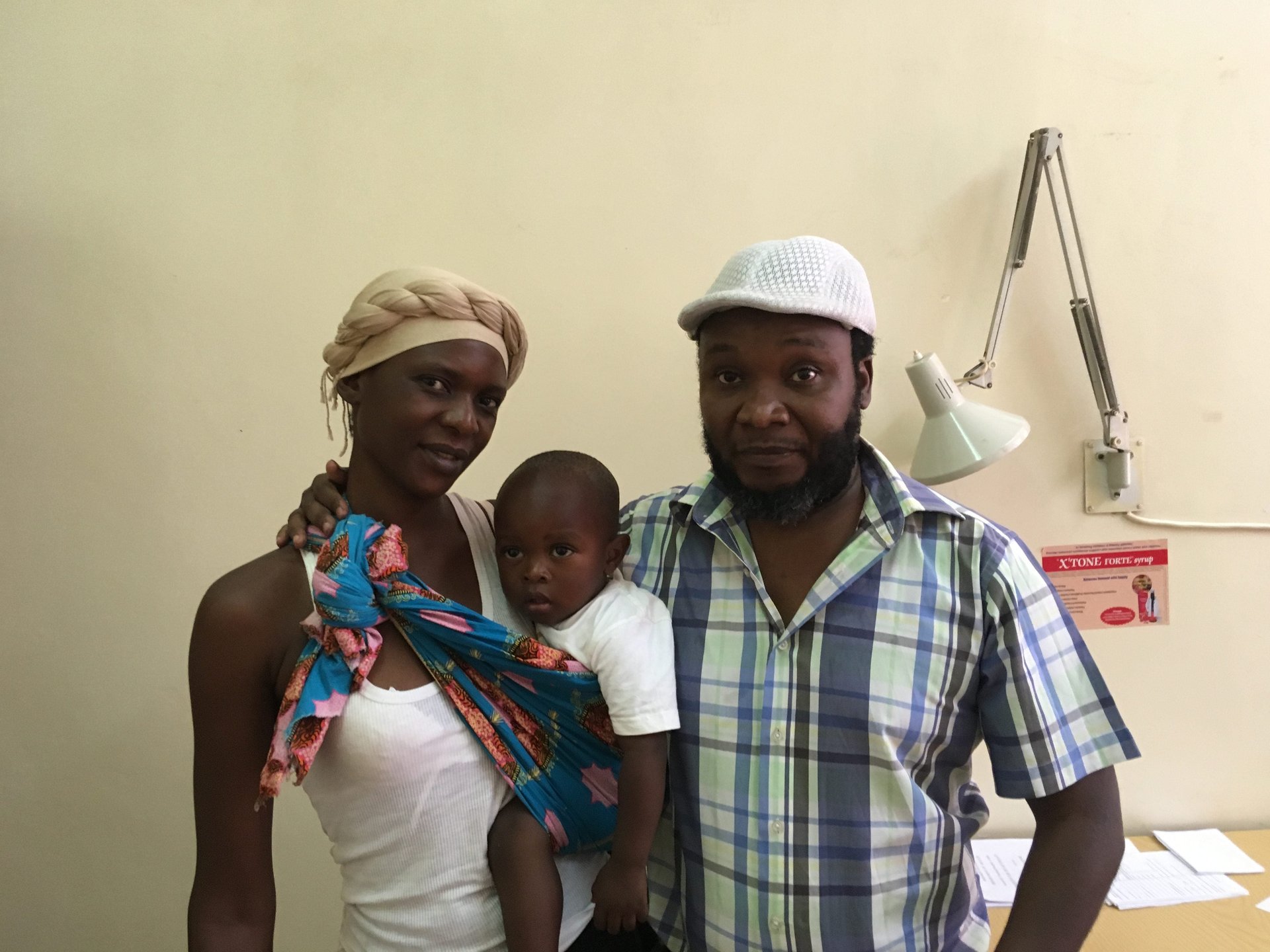
While ischemic strokes are often caused by high blood pressure, once they have occurred, that same high pressure can also force blood through a delicate network of collateral blood vessels, supplying the affected area of the brain with oxygen and glucose even when a larger vessel is blocked. When emergency stroke patients are given medication to reduce their high blood pressure, blood may no longer flow through those collateral vessels, increasing the damage to the brain.
Hemorrhagic stroke patients with uncontrolled brain bleeding, on the other hand, benefit when their blood pressure is immediately reduced. It’s not clear how Chikasa’s stroke was diagnosed, but his initial treatment may have lowered his blood pressure too quickly.
Improved neurological care will likely improve outcomes for patients like Chikasa. Even more critical is improving public knowledge of lifestyle risks that can lead to high blood pressure.
Zambia’s gap in public awareness of stroke risk is one of the reasons Mashina Chomba, another trainee, began a career in medicine. He was in high school when his father had his first stroke in 2001. Diabetic and with high blood pressure, he recovered, only to have subsequent strokes.
High blood pressure, or hypertension, puts stress on blood vessels. The pressure can either lead the vessels to burst, causing a hemorrhagic stroke, or to crack, which creates clotting that can lead to ischemic strokes. “No one ever took the time to explain to my father about his diet,” Chomba says. “No one told him what traditional African foods to avoid.”
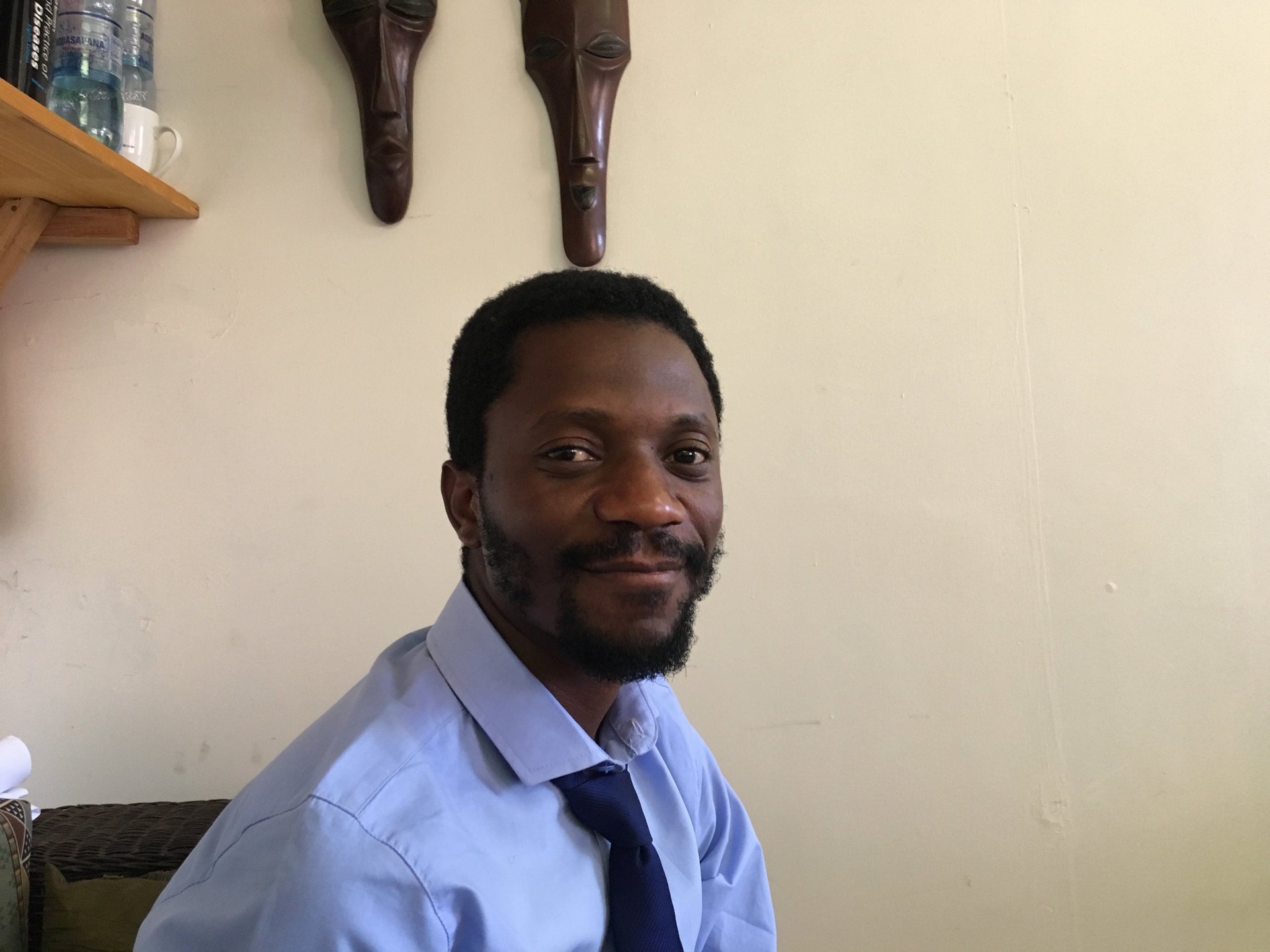
Hypertension can be hereditary, but it’s also a product of obesity, smoking, and—especially in Zambia—high salt intake. Zambians add salt liberally to most meals: Even UTH’s makeshift cafeteria hands out packets of salt freely. Among adults in Zambia’s urban areas, 35% have high blood pressure, according to a 2011 study, among the highest known rates in sub-Saharan Africa.
A public awareness campaign is still in its infancy, as are efforts to increase monitoring and medication. Meanwhile, blood pressure drugs aren’t available in many rural areas, says Fastone Goma, founding president of the Zambia Heart and Stroke Association, and government-run pharmacies are the worst supplied. “The government doesn’t really appreciate the gravity of the situation,” he says.
So while prevention may ultimately prove the most effective strategy, in the near term, Zambia’s strokes will need to be treated.
The promise of better care
The neurologists in the training program were joined by another class that began in October, and yet another will begin next year. In six years, Saylor says, the program will have trained nine Zambian neurologists.
The hope is these new doctors will introduce practices and procedures that improve stroke diagnosis and treatment and, eventually, pave the way for emergency stroke care. “That is my expectation—to do tPA and all sorts of surgical interventions,” says Zimba. “Of course I understand the setting where we are. We are really limited by resources.”
But Zimba points to Zambia’s history with nephrology: As recently as 2004, the nation didn’t have the ability to perform dialysis for diabetes patients with failing kidneys, and patients who could afford it were sent to India. Now, there are 24 dialysis machines at UTH and others at regional hospitals.
Initially, emergency stroke care would probably be available only to the wealthy and to VIPs, Zimba says. But eventually it could be made available to a wider group who can get to the hospital within the narrow window for treatment.
Birbeck points out that even if most patients won’t be treated with tPA or surgery, their potential availability will speed up the metabolism of stroke care for everyone. With the potential for emergency intervention, stroke could shift from a disease that’s chronic to one that’s acute. Even the patients who arrive too late for tPA would still benefit from being treated in an emergency setting.
“If you thought of stroke as an emergency, it would change everything,” Zimba says.
Read more: With the pharma industry’s repeated failures to develop stroke treatments, stroke doctors have turned to mechanical devices that can clear blocked blood vessels in the brain.
Even without reaching that standard of care, there is much that can be done for Zambian stroke patients. Saylor is leading a study to determine if any of the non-technological scoring systems devised by doctors in Japan, the UK, and Thailand would work in Zambia to diagnose stroke types without a scan.
But perhaps the single most effective improvement for stroke patients—and the one Zimba is most focused on—would be the creation of dedicated stroke units in Zambian hospitals.
Stroke patients are now scattered across the wards, surrounded by patients with other ailments. A stroke unit could gather them together, cared for by nurses trained in stroke care.
Simple interventions to decrease stroke mortality would be the norm: Patients could be elevated in bed, reducing the risk of inhaling food or water. There are no reclining beds at UTH, but a ready supply of foam wedges would do the trick—better, at least, than shoving a box under a mattress to be unwittingly removed by a nurse or orderly.
Bedsiders could also be educated in how to care for their loved ones with stroke, Zimba says. Sometimes, stroke patients aspirate when family members try to give patients food or water—a problem made worse by UTH’s requirement that they must pay for nasal feeding tubes, leading bedsiders to feed them by hand.
A similar unit at Ignance Deen Hospital in Conakry, Guinea led to significantly improved outcomes for stroke patients. Fatalities from stroke fell from 22.3% to 7.2%, and complications like pneumonia fell by similar rates. Through trial and error, Zambia’s doctors could eventually introduce stroke units throughout the country.
All of these plans, of course, rely on Zambian neurologists invested in the care of their fellow citizens, who have credibility with the administrators of the hospital and at the ministry of health, and who are well versed in both the science and art of stroke care.
Training Zambian neurologists won’t solve the country’s stroke epidemic. But it’s impossible to see the beginning of a solution without more Zambian neurologists.